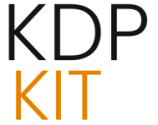KDP al Review 2025: Kids Book Publishing AI – Automation’s New Frontier

TODAY’S DATE: October 26, 2025
The landscape of self-publishing on Amazon Kindle Direct Publishing (KDP) has undergone a significant transformation heading into the latter half of 2025. This evolution is fundamentally driven by the rapid maturation and integration of generative Artificial Intelligence. The original proving ground for this technology—the low-content segment—is now the bedrock upon which more complex publishing strategies are being built, forcing creators to adapt not only their production pipelines but also their compliance and marketing techniques.
The Low-Content Publishing Revolution Powered by Automation
The low-content book segment, which encompasses items like journals, logbooks, planners, and coloring books, has become the most visible proving ground for the application of these new automation technologies. This category, defined by its minimal internal written content, has always been attractive due to its relatively low barrier to creative execution. However, in twenty twenty-five, the speed and scale at which these products can now be conceptualized, designed, and iterated upon have been fundamentally transformed by AI capabilities. Instead of spending significant time manually creating recurring page layouts or brainstorming unique thematic prompts, creators are deploying sophisticated AI prompts to handle the heavy lifting. This shift allows a single creator to manage a portfolio of dozens, if not hundreds, of niche product listings, something previously requiring the resources of a small publishing house or a large team of freelancers.
Delineating Low-Content Versus Medium-Content Offerings
A significant development noted in market analysis for twenty twenty-five is the blurring line, and in some cases the outright replacement, of traditional low-content formats by what are now termed medium-content books. While a traditional low-content book might be a blank-lined notebook, the market is increasingly favoring products that include structured interaction, such as guided journals with pre-written prompts, activity books, or workbooks. These medium-content offerings provide a higher perceived value to the consumer and, importantly, offer more defensible market positions against sheer volume competition. For instance, a simple coloring book is easily replicated, but a guided gratitude journal featuring introspective prompts generated by an AI, which a human then curates and designs around, offers a layer of utility that the purest low-content formats often lack. This strategic evolution suggests a maturation of the sector, rewarding those who blend the efficiency of automation with the added value of thoughtful structure. As of mid-2025, market experts suggest that generic, purely blank journals face significant profit margin erosion due to market saturation.
AI as the Ultimate Accelerator for Niche Identification and Validation
The success of any low-content venture hinges on finding an underserved, high-demand niche, a process traditionally reliant on manual market research and sometimes guesswork. In twenty twenty-five, AI tools are being heavily utilized to analyze existing sales data, scour search engine trends, and even monitor social media buzz to pinpoint emerging or rapidly growing micro-niches. For example, an author can task an AI with analyzing best-seller lists for under-represented themes, such as planners specifically designed for niche hobbies, specific professional roles, or unique demographic needs. This capability to rapidly validate an idea—determining if a market exists and what its specific pain points are—before any significant creative investment is made, represents a powerful competitive advantage. This diagnostic application of AI drastically reduces the risk associated with launching new product lines in a saturated environment. Successful authors in 2025 often cite using these AI-informed research tools to target sub-niches with a healthy Bestseller Rank (BSR) average of 300,000 or less, indicating demonstrable demand without extreme competition.
Harnessing AI for Content Generation in Non-Fiction and Activity Books
The utility of generative AI extends powerfully into the creation of the interior components for various book types, drastically reducing the time from concept to a printable, ready-to-upload file. This is particularly relevant for children’s books, activity books, and journals that require unique, repeatable elements that do not constitute long-form prose. The ability to command a digital assistant to produce tailored content on demand is reshaping the production pipeline from a linear assembly line into a dynamic, responsive design studio.
Automating Interior Creation for Journals and Planners
For creators focusing on productivity, wellness, or specialized tracking, the internal page layouts and content that fill those pages are the primary product. AI tools are now adept at generating structured content that perfectly fits within a given template. For a daily planner, an AI can be prompted to create unique goal-setting grids, habit trackers, or motivational affirmations to populate weekly spreads. In the case of a specialized logbook, such as one for tracking fitness milestones or financial budgets, the AI can construct the necessary column headers, input fields, and even subtle instructional text. This automation minimizes the tedious labor of laying out repetitive elements, freeing up the human operator to focus on the cover design, overall book theme, and final quality assurance checks, which remain crucial for compliance and quality in 2025.
Leveraging Generative Models for Puzzle and Activity Book Components
Puzzle books—including crosswords, Sudoku variants, word searches, and logic grids—represent another area where AI provides exponential leverage. While the puzzle format is often standardized, the content that populates it, such as the word lists for a word search or the clues for a crossword, requires unique generation to avoid duplication and appeal to a specific theme. Generative AI can absorb a target theme—for example, “rare deep-sea fish”—and produce a relevant, themed word list, along with associated clues, which can then be fed into a separate puzzle-generation algorithm or manually arranged by the publisher. This allows for the rapid creation of highly themed activity books that capture niche audiences, moving past generic offerings and providing fresh content that keeps readers engaged with a publisher’s catalog. The complexity of niche-specific content generation is where AI offers the greatest advantage over mass-produced templates.
Specialized Applications in Children’s Book Creation
The original context of the subject matter points specifically toward Kids Book Publishing AI, highlighting a cutting-edge intersection where AI is not just assembling pre-existing elements but is actively synthesizing narrative and visual assets for young audiences. This area represents perhaps the most transformative application of the technology within KDP today, aiming to empower creators to produce complex, richly illustrated, and even interactive storybooks with minimal traditional overhead.
From Prompt to Print: AI-Driven Story and Illustration Workflows
The most advanced AI creative suites available to publishers in twenty twenty-five are capable of managing the entire spectrum of children’s book production from a simple textual input. A creator can input a theme, a character description, or even a simple plot outline, and the underlying models generate an age-appropriate narrative, complete with sentence structures and vocabulary suitable for the target reading level. Simultaneously, the system generates corresponding illustrations, often in a charming, consistent style, ensuring that the text and visuals are perfectly synchronized page by page. This integrated workflow replaces the need to hire, coordinate, and pay for separate writers and illustrators, collapsing a process that could take months into a matter of minutes, creating print-ready files that are immediately eligible for the KDP upload process. Some specialized tools, for instance, are reported in mid-2025 to complete this entire sequence, including character consistency checks, in under an hour.
The Emergence of Multilingual and Interactive AI Narratives
A significant feature emerging from these specialized children’s book creation platforms is the native capability for extensive language support. This moves the potential market for a single book far beyond a single linguistic territory. An author who develops a successful concept in English can, with a few clicks, export fully translated versions—often supporting over a hundred languages—complete with illustrations adapted to cultural sensibilities where necessary. Furthermore, some advanced tools are integrating narration capabilities, allowing the AI to produce high-quality, ready-to-use audio narration for an accompanying digital or read-along version of the book. This fusion of sophisticated text, custom visuals, and professional audio effectively creates a multi-sensory product from a singular creative seed, massively expanding the potential reach and monetization routes for the independent publisher.
The Crucial Regulatory Framework: KDP Disclosure Mandates for Twenty Twenty-Five
As the capabilities of content generation software become more potent, Amazon KDP has solidified its stance on transparency, implementing clear guidelines that authors must navigate during the submission process. This regulatory structure is a direct response to the influx of machine-generated material and is designed to maintain marketplace integrity and reader trust. Navigating these rules correctly is not optional; failure to adhere can result in listing suppression or account suspension, making a clear understanding of the policy essential for continued operation.
The Definitional Divide: Distinguishing AI Generated from AI Assisted Content
The core of the twenty twenty-five KDP policy rests upon a critical distinction between two states of AI involvement. AI Generated Content is unambiguously defined as any text, image, or translation that was substantially or entirely created by an artificial intelligence-based tool, requiring a mandatory affirmative disclosure to Amazon during the publishing steps. Conversely, AI Assisted Content refers to the use of AI tools to refine, check, or improve work that the human author primarily created. This assistance includes using AI for error-checking grammar, refining existing sentences, or, crucially, for brainstorming initial ideas and concepts, provided the author ultimately drafts and writes every word themselves. Recognizing which category a creator’s workflow falls into is the single most important step in compliance. Critically, KDP mandates disclosure even for AI-generated cover images and interior artwork as of Summer 2025 updates.
Authorial Responsibility and Transparency in Disclosure Selection
While the system often defaults to a “no” disclosure, authors are bound by the terms of service they agree to, meaning they must actively assess their process and select the correct option. For the publisher who uses a language model to suggest a list of potential themes but then researches and writes all the content and quotes for a journal manually, the work is safely categorized as AI-assisted, not generated. However, the moment a tool is used to write the actual descriptive text for a picture book or to render the final, unique images for a coloring page, the disclosure requirement is triggered. Professional guidance often recommends adhering to the strictest interpretation of these rules to safeguard one’s publishing activities against potential retrospective scrutiny from the platform’s review teams. Maintaining an audit trail of edits and AI tool usage is cited as a best practice to mitigate risk.
Strategic Marketing and Discoverability in the AI-Influenced Marketplace
With content creation streamlined, the focus of a successful publishing operation in twenty twenty-five must pivot sharply toward effective marketing and ensuring that these newly created products can actually be found by their intended audiences. The traditional methods of description and keyword stuffing are no longer sufficient in a marketplace flooded with content. Discovery now requires leveraging platform-specific algorithms and tapping into current cultural trends where visual content reigns supreme.
Integrating Social Virality: Leveraging Short-Form Video for Product Promotion
Social media platforms, particularly those centered on short-form video content, have become indispensable marketing channels for low- and medium-content products. Creators are increasingly developing promotional strategies around trend-driven engagement, such as organizing virtual “challenges” tied to a planner or journal—for instance, a “thirty-day productivity challenge” promoted via popular video sharing applications. Furthermore, the visual nature of these platforms is ideal for showcasing the aesthetic appeal of physical products, such as the unique interior designs of planners or the artistic quality of a coloring book. This strategy involves actively engaging with niche communities on these platforms, often through targeted influencer collaborations within specific verticals like wellness or hobbyist pursuits, to drive traffic directly to the Amazon listing.
Optimizing Listings with AI-Informed Keyword and Blurb Generation
The creation of compelling product metadata—the book’s title, subtitle, and description—is also heavily influenced by AI in this era. Beyond simply writing persuasive marketing copy, AI tools are employed to analyze real-time search query data from platforms like Google Trends or specialized KDP research software to suggest keywords that are currently experiencing high search volume but possess lower competition. These data-driven insights inform the final blurb, ensuring that the description not only reads well to a potential buyer but is also meticulously optimized for the marketplace’s internal search algorithms. This blend of compelling sales language and algorithmic precision is vital for pushing a new title past the initial visibility hurdles in the high-volume environment of 2025.
Quality Control and Ethical Considerations in Automated Publishing
While the speed and scale afforded by AI are revolutionary, they introduce inherent risks related to quality degradation, homogenization of content, and broader ethical quandaries that must be proactively managed by any serious publisher. The convenience of automation can quickly lead to a product that is technically present but functionally deficient or ethically questionable if left unchecked.
The Imperative of Human Oversight in Reviewing AI Output
Despite the impressive capabilities of generative models, the consensus among successful twenty twenty-five publishers is that a dedicated layer of human oversight remains absolutely non-negotiable. An AI might generate content that is technically correct but lacks the necessary nuance, emotional resonance, or true originality required to delight a reader or provide genuine utility. In children’s books, this means checking for age-appropriateness and narrative coherence; in low-content books, it involves verifying that generated prompts or layouts are functional and free of bizarre structural errors. This final human review acts as the essential quality gate, ensuring that the product reflects a standard that justifies a purchase in a crowded marketplace, often requiring light editing or regeneration of subpar outputs. Over-reliance without this final check is a primary driver of negative reader feedback in the current year.
Navigating Intellectual Property Concerns in Machine-Assisted Creation
The rapid proliferation of AI-created works has, understandably, led to increased scrutiny and legal debate concerning intellectual property rights. Publishers must be acutely aware of the terms of service for the specific AI tools they employ, especially regarding commercial rights to generated text and imagery. There are ongoing discussions and even legal challenges—such as instances where major content aggregators have initiated actions against platforms for the unauthorized use of copyrighted material to train their models—that highlight the potential instability of relying solely on AI output without clear licensing. A prudent author remains cautious, opting for tools with transparent data usage policies or applying significant human modification to AI outputs to ensure the final work represents a transformation of the base data, thereby securing a stronger claim to originality.
Future Trajectories and Broader Implications for Independent Authors
The current momentum suggests that the technological advancements discussed—the fusion of AI with KDP—are not a temporary fad but a fundamental re-platforming of the self-publishing industry. Understanding where these trends point next is crucial for long-term planning and building a sustainable independent author enterprise.
Monetization Models Beyond Traditional Per-Unit Sales
The reliance solely on a one-time purchase price for a physical or digital book is beginning to look like an increasingly limited monetization strategy in the twenty twenty-five digital landscape. As quality and content volume increase, creators are exploring more dynamic income streams. This includes the integration of lead-capture mechanisms within books, such as a simple sign-up form on the final page offering an email opt-in for exclusive content or discounts, a tactic that has shown promising initial results for immediate list building. Furthermore, as AI enables faster content iteration, some publishers are exploring micro-subscription offerings or tiered access models for highly specialized content that requires continuous updating, recognizing that building a direct author brand and list is paramount for sustained earnings.
Anticipating Platform Policy Refinements and Competitive Dynamics
Given the current regulatory focus on AI disclosure, it is highly probable that Amazon KDP and similar platforms will continue to refine their terms of service as the technology evolves. Authors should anticipate increasingly granular requirements for what constitutes “AI-assisted” versus “AI-generated,” potentially leading to new metadata fields or even mandatory watermarking technologies for specific content types. The competitive dynamic is also set to intensify; while AI has lowered the barrier to entry, the next competitive frontier will be defined by the mastery of these AI tools—those who can prompt most effectively, design most creatively around the AI output, and market most strategically will capture the majority of the market share, turning the initial publishing boom into a more discerning, skill-based industry.






